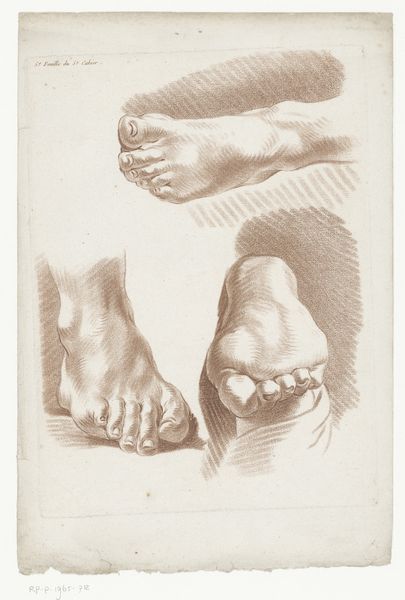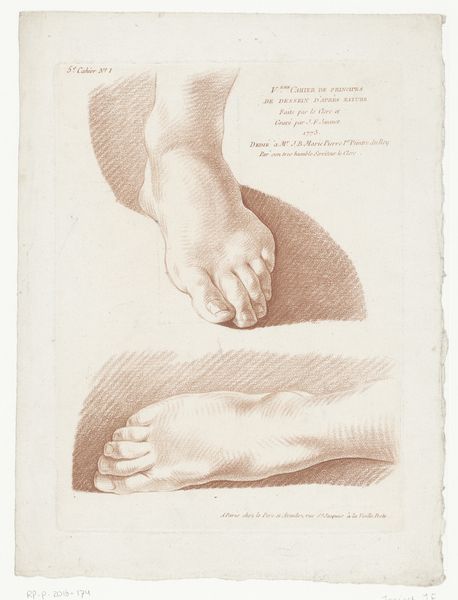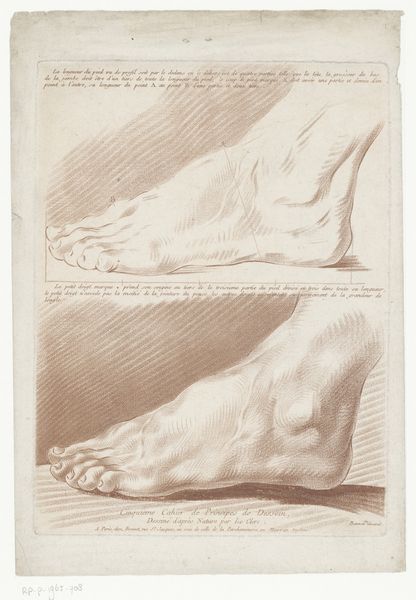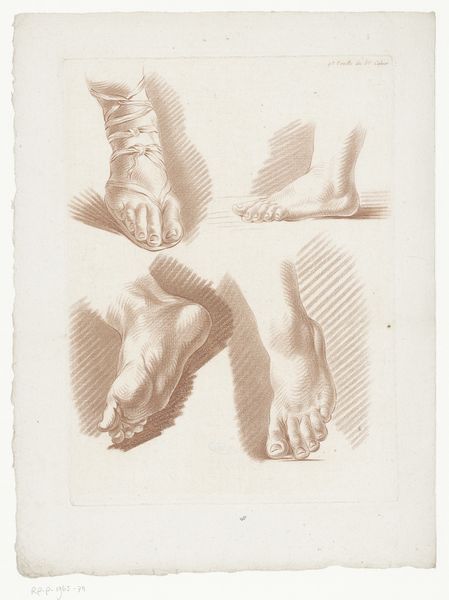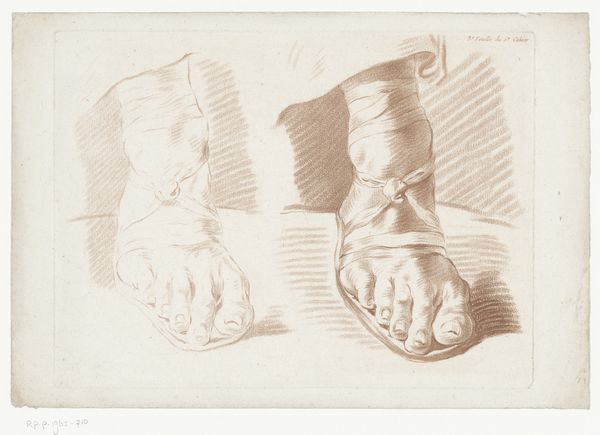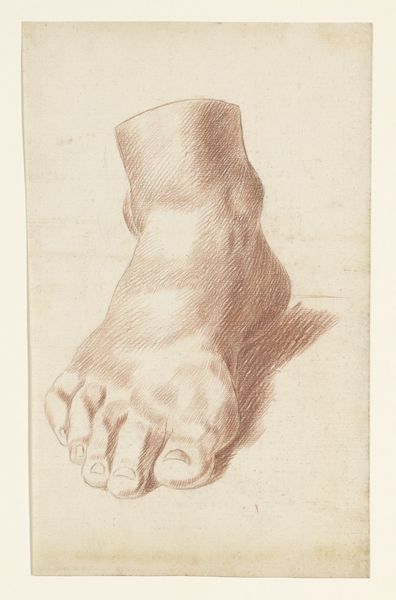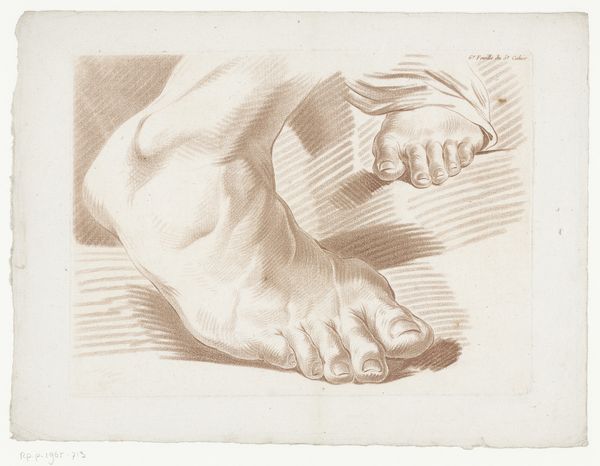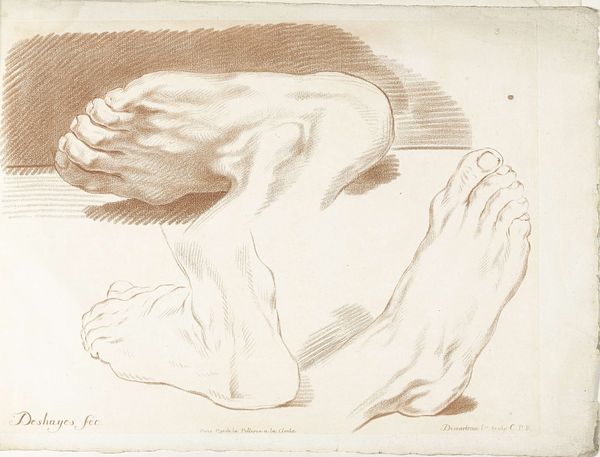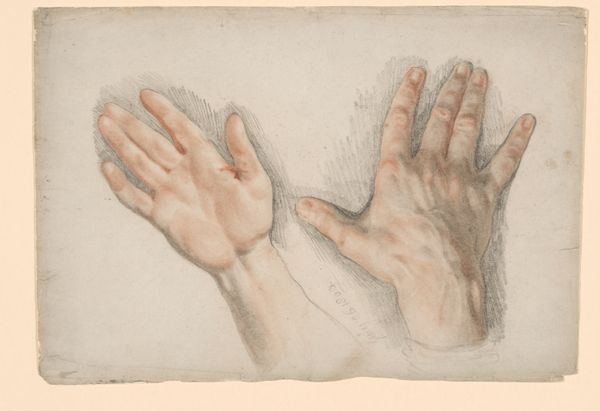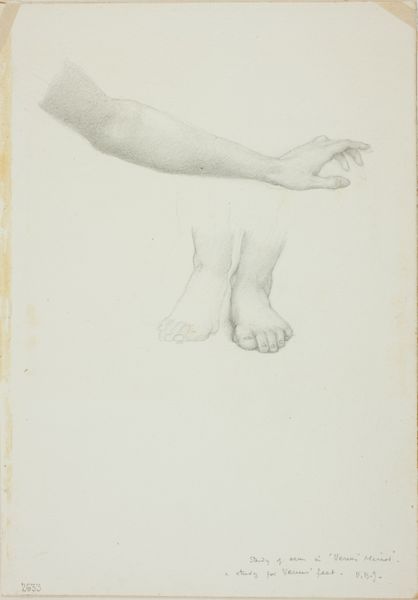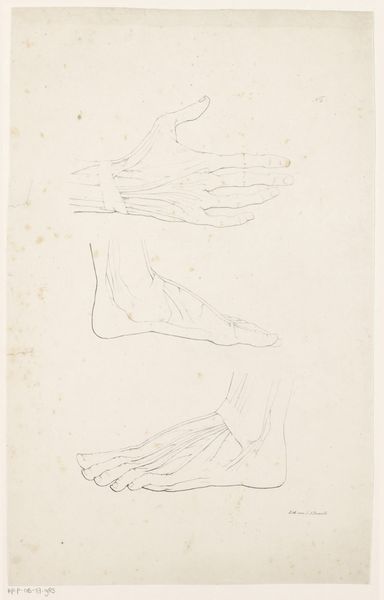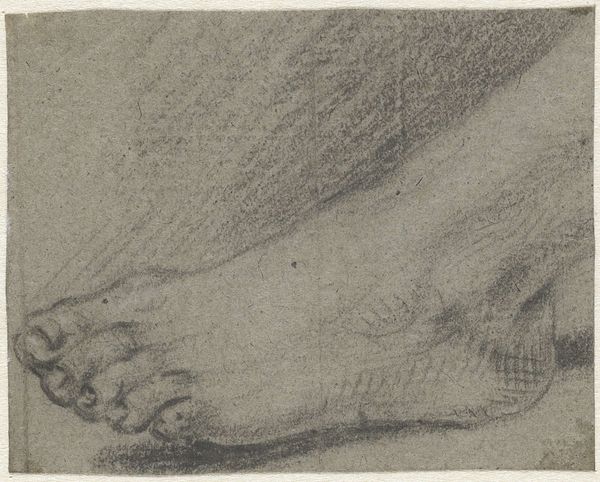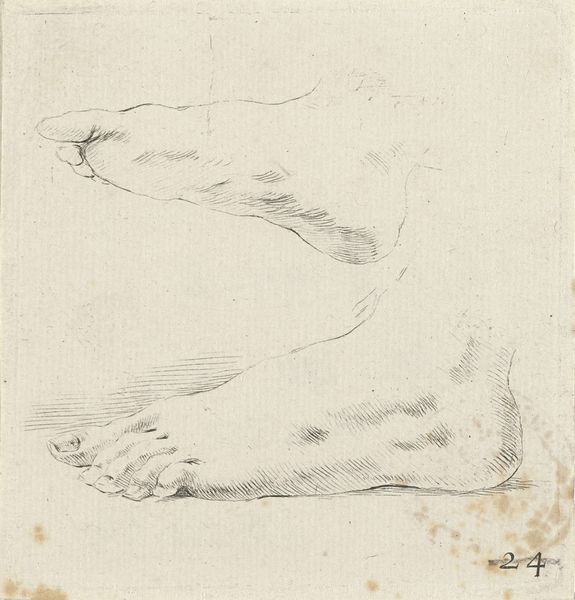
drawing, paper, pencil
#
drawing
#
pencil sketch
#
charcoal drawing
#
paper
#
pencil drawing
#
pencil
#
portrait drawing
#
academic-art
#
nude
Dimensions: height 292 mm, width 213 mm
Copyright: Rijks Museum: Open Domain
Curator: This drawing, titled "Two Feet," was created around 1773 by Jean François Janinet. It’s currently held in the collection of the Rijksmuseum. The medium is pencil on paper. Editor: My initial impression is one of quiet contemplation. There is something inherently peaceful about the subtle gradations of tone and the artist's delicate hand in capturing such detail. The positioning is curious; I can’t help but wonder, what do those lines describe in form and value? Curator: Well, consider the artistic conventions of the time. In the 18th century, anatomical studies such as these were common practice. They played a vital role in the academic training of artists. It embodies a move away from art depicting solely elevated topics like religion or aristocracy. This showcases how mundane subjects became worthwhile because it improved technique and skill, as promoted by institutions like the Académie Royale. Editor: Precisely! Note how the subtle hatching defines form with precision, while the minimal lines on the soft skin suggests the structure that rests upon those bones. Janinet carefully used different values to convey the form of each foot; how does this challenge and confirm anatomical precision in your view? Curator: Indeed! I view Janinet working toward greater scientific accuracy. It is an insight into the intellectual environment of that period. But also, notice its departure from classicism in subject matter, signifying changes happening throughout European society. This suggests emerging ideas regarding personal identity connected inextricably with the body rather than one’s rank at the time. Editor: An intriguing detail is that Janinet is perhaps celebrating humanity itself and all its individual parts without artificiality. I notice, for example, how the details on the feet convey how soft it looks. What’s more fascinating here, though? The simplicity allows space for understanding—making sure we see that they’re more nuanced than first perceived! Curator: Reflecting on "Two Feet", I appreciate its position within art's complex role; serving as a record both social shifts while maintaining enduring themes pertaining directly and simply within artistic practice itself. Editor: Absolutely! Considering the visual language and material, one can admire these two feet—perfect example displaying beautiful possibilities.
Comments
No comments
Be the first to comment and join the conversation on the ultimate creative platform.
